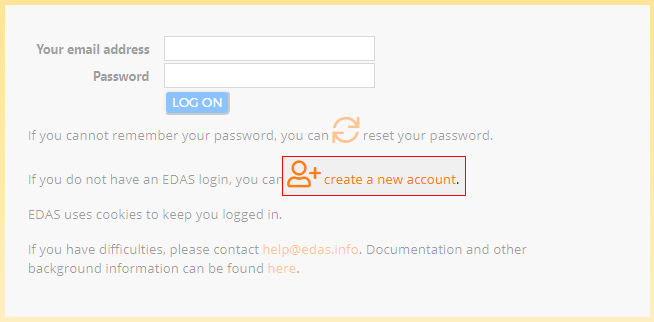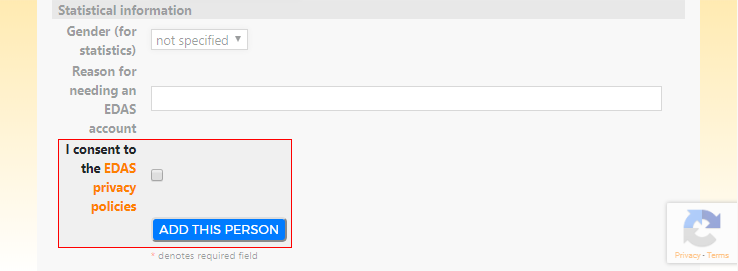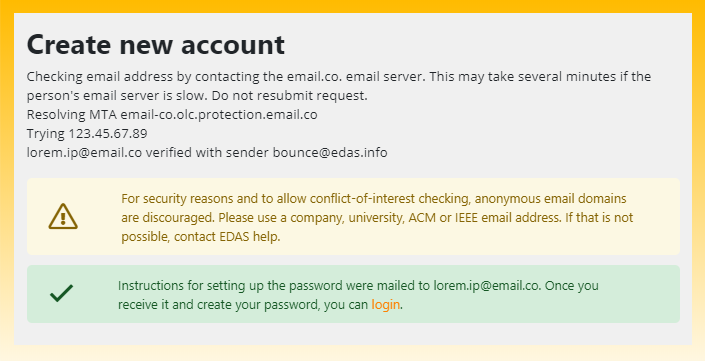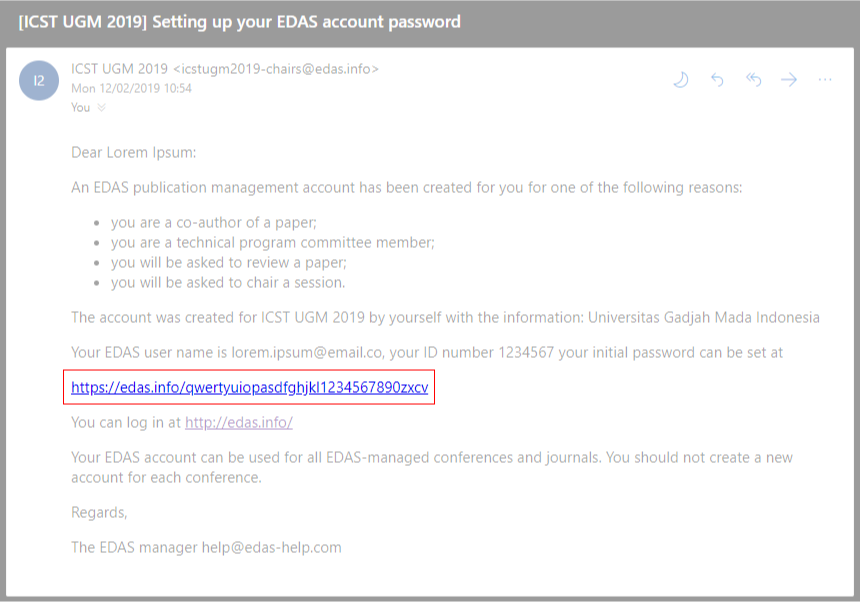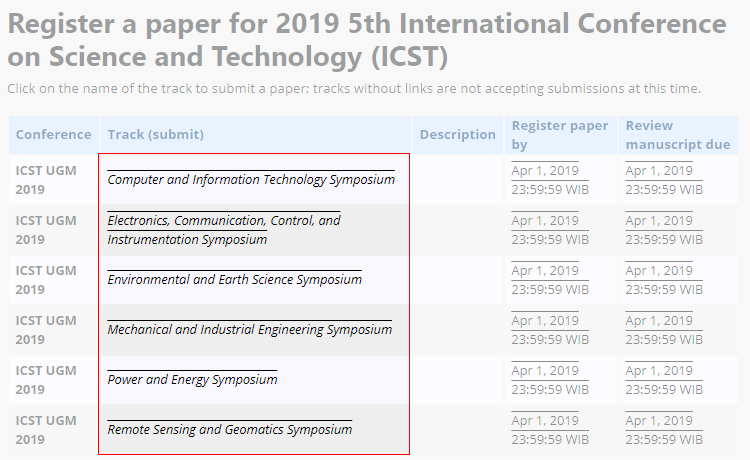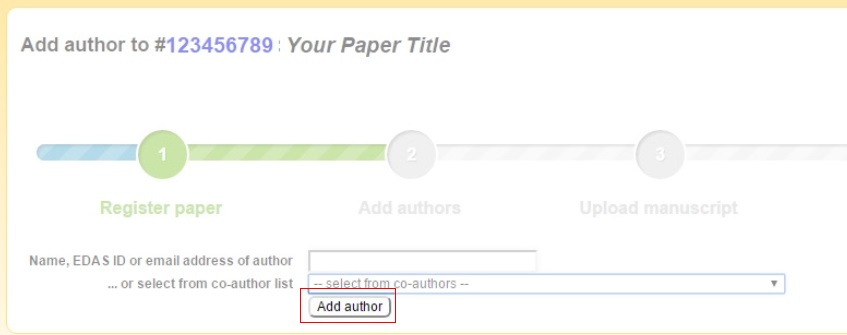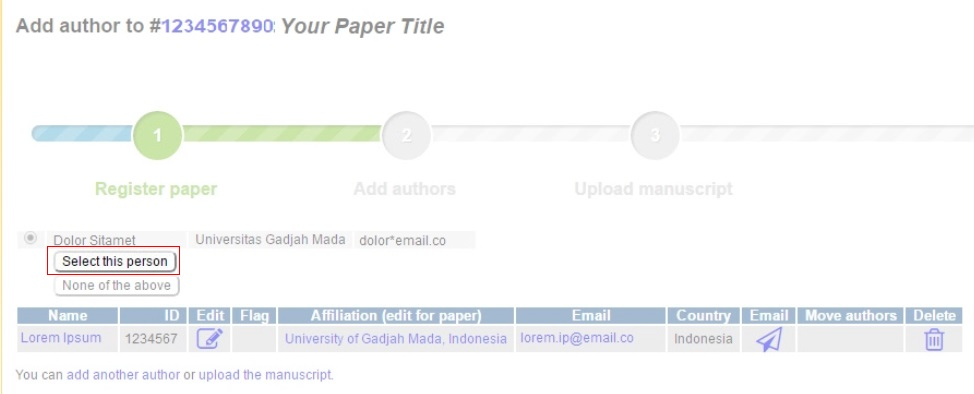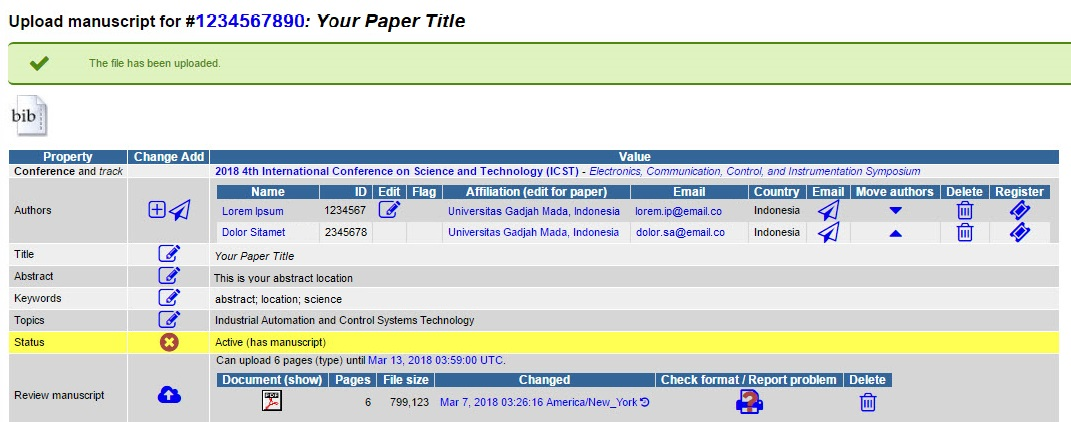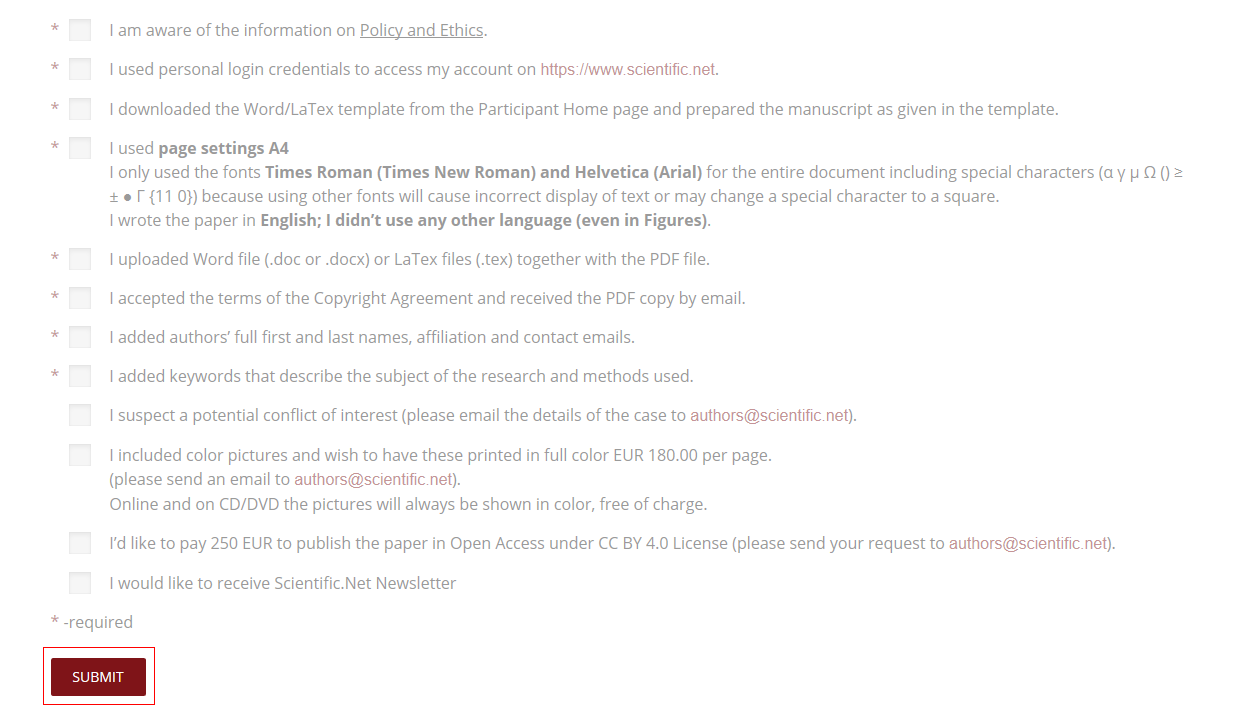Preparing your paper
It is essential that the topic of your manuscript aligns with both the thematic scope of the symposium and the publisher’s guidelines. This ensures relevance to the conference objectives and resonance with the interests of attendees and readers.
All submissions must present original research and must not have been previously published or presented elsewhere. To uphold academic integrity, manuscripts must not exceed a similarity score of 20%, with no more than 5% similarity from any single source. 💡 We strongly recommend using plagiarism detection tools such as Turnitin or iThenticate to verify manuscript originality.
All papers must be written in English (US) to ensure clarity and accessibility for an international audience.
Manuscript Format
- Abstract: Maximum 250 words (excluding title, authors, and affiliations).
- Layout: One-column format on A4 paper, submitted in DOCX and PDF.
- Length: Minimum of four pages to ensure sufficient detail and contribution.
- Template: Use the official Microsoft Word-Macro enabled document template (DOCM format), optimized for PC compatibility. Download here ↧
Ensure all fonts are embedded, and the document is not encrypted or secured. Avoid using headers, footers, bookmarks, form fields, hyperlinks, or annotations.
For compliance verification, we recommend using the PDF Analyzer ↗︎ provided by EDP Sciences.
Figures & Tables
All artworks must be submitted at a minimum resolution of 300 DPI. Tables and figures sourced externally must be in English (US), with proper permissions and citations in accordance with copyright regulations. Tables must not be included as pictures or screenshots.
Author Information
Provide complete credentials for all authors, including:
- Full names,
- Email addresses, and
- Institutional affiliations (list all if multiple), including city and country.
Do not include professional titles (e.g., Professor, Lecturer, HOD, Graduate Student) in affiliations. The order of author names must remain unchanged, unless formally approved by the publisher.
Ethical Citation Practices
Authors must avoid unethical citation practices, including:
- Excessive self-citation
- Irrelevant or honorary citations
- Over-reliance on citations from the target journal
Cite only sources that are directly relevant and substantiate your research. Refer to COPE’s guidelines on citation manipulation ↗︎ for further clarity.
Peer-Review Process
All submissions undergo:
- Initial editorial screening
- Blind peer review based on:
- Relevance and timeliness
- Technical and scientific rigor
- Novelty and originality
- Presentation quality
Decisions include: rejection, major revision, or minor revision. Authors will be notified via email and can track progress via their EDAS account.
Post-conference, accepted papers will undergo additional review by the publisher, who will determine final acceptance.
Publication Ethics
ICST UGM adheres to the COPE Guidelines for Transparency and Best Practice in Scholarly Publishing ↗︎. All authors are expected to comply with the Code of Conduct ↗︎ as outlined by COPE.
Conference Attendance
Authors must attend the conference on July 30–31, 2025, in Yogyakarta, Indonesia, for a live Q&A session. Attendance is mandatory. If unavailable, a co-author must present in your place. Unpresented papers will be excluded from publication.

